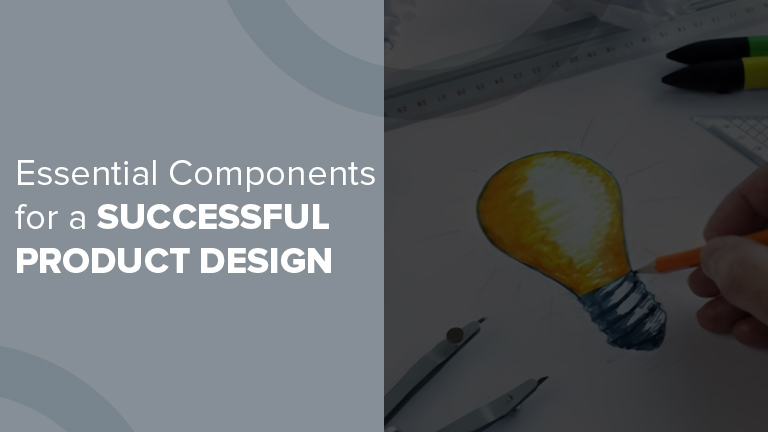Essential Components for a Successful Product Design

Developing a product from ideation to execution is a massive task for product design agencies. A successful product is more than simply aesthetically pleasing or functionally sound. There are other variables and forces at play. A good design can never be defined too narrowly. Product design is all about innovation, and there are numerous examples to illustrate that. But there are a few components in successful product design that we’ll cover in this blog.
Key Components of Product Design
Aesthetics
Most people will notice how well a product is created by its appearance, which is one of the most evident aspects of its design. People are more likely to be drawn to a product based on its appearance than its features, usability, or ability to accomplish a task. When it comes to making a purchase, this is frequently the decisive factor.
Don’t be afraid to keep up with the latest design trends across the board and in your own business. It’s crucial to know how your buyers want your products to look like and for that you may take the help of creative design services.
Ergonomics
This is when it’s critical to put utility first. If a product is complicated or annoying to use, customers will quickly forget about the product’s stunning appearance. Assuring that the product is intuitive and simple to use should be the primary goal. Having a convenient, easy-to-use product but is less than perfect in terms of appearance is preferable to a product that appears wonderful but is difficult to use.
Materials
When it comes to product design, the material from which it is manufactured is an apparent factor to take into account. Product use, estimated life span, and environmental conditions must be thoroughly analyzed to assure the product’s viability. You must extensively investigate the materials and their vulnerabilities before using them.
Manufacture
It’s simple to assume that in today’s technologically advanced world, we can produce everything we desire. That isn’t necessarily the case, though. CNC machining, for example, has limitations when it comes to undercuts of all shapes and sizes. While intricate forms and goods can be manufactured, it is frequently necessary to separate the product into smaller pieces so that it can be cast or machined and then assembled.
Modularity
There are several designing professionals who use this strategy of breaking down a product into smaller bits. As a starting point, the goal is to create a single component that can be used in several products. The product should be designed to be modular as future units and improvements get simpler to manufacture, and mending items becomes as easy as replacing the broken ‘module.’
Sustainability
Make sure the materials and components you use in your product design are readily available. Many firms have been forced to shut down their doors since the components for their main product were becoming more scarce. The items and materials you use should be readily available, well-established, and easily interchangeable.
Protection
Water and dust may easily cause industrial products to fail if they aren’t IP rated. Maintain the essential environmental and user protection for your product so that it may be used for an extended period of time.
Assembling and Putting Together
After the aesthetics, the packaging and assembly are the next things a buyer will see when they are interacting with your products. You must pay particular attention to the unboxing experience.
Conclusion
The way you accomplish things in real-time is what defines your design process. Throughout various phases, you should always explore integrating new technology and methodologies into your product design. Reach out to our experts today to evaluate components of your product.
Do you know there is a process to follow design validation. Click here to read more about it.

